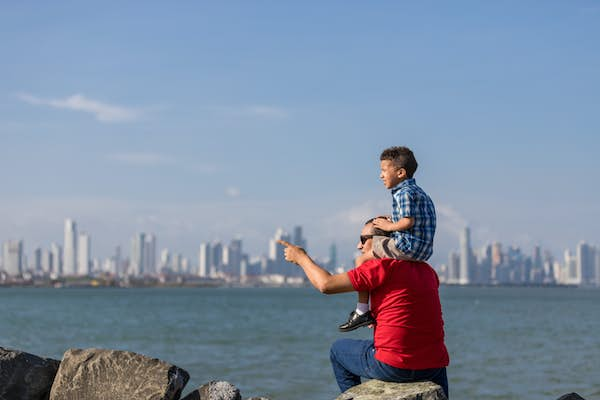Glossy showrooms, high-rise condos and luxury shopping malls illuminate Panama City’s banking district.
This has been the epicenter of prodigious real estate development in recent years. Panama City is an international banking center and global trans-shipment hub with generous offshore tax structures and strong secrecy laws. Dubious money, laundered through real estate, has been transforming the city’s oceanfront since the Noriega years. Despite this chequered past and present, it’s important to remember that as a tourist in Panama City, you’re highly unlikely to encounter cartel-related violence.
It’s safe to travel alone. The banking district is well policed, at least during the day, and most crimes are the low-key and opportunistic type you’ll encounter in any major city. Parts of the city are rough and tumble, others are no-go, but most are benign. You will have no problems if you stay alert and follow big city rules.
From planning your trip to local etiquette, here’s what you need to know before traveling to Panama City.
1. Study a map before choosing where to stay
Every neighborhood has its advantages and disadvantages. With cobblestone streets and Spanish colonial architecture, the historic quarter of Casco Antiguo is the most memorable and romantic part of the city. It has a plethora of high-end restaurants, luxury lofts and swanky rooftop bars, but a dearth of budget-friendly eateries and its public transport links aren’t the best.
The Calidonia district in the southern part of the city occupies a grid of streets from Plaza 5 de Mayo to Calle 42 Este. Avenida Central bustles with market stalls, and the roads to the south are dotted with budget-friendly hotels. The district is near plenty of Metro trains and buses. You can pick up cheap street food during the day when kitchens open for local hospital staff and civil servants. After dark, however, Calidonia becomes shady and downbeat with limited dining options.
To the east of Calidonia, the so-called banking district is a patchwork of several districts or corregimientos, including modern and emerging neighborhoods that host the lion’s share of high-end lodgings and Airbnb rentals. There are a few hostels and not nearly enough economical hotels. Many decent restaurants are dispersed throughout the banking district but are not always within walking…
Click Here to Read the Full Original Article at Stories – Lonely Planet…
